Spirits of the Western Sky: Justin Hayward Talks PBS Package, Solo Albums and The Moody Blues
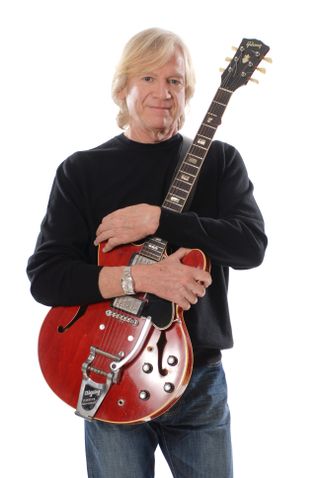
Justin Hayward—whose career has spanned a staggering 50 years—has played a huge role in modern music history.
Whether it’s his tasteful guitar playing with the Moody Blues or as a solo artist, or his endless catalog of classic songs—including “Nights in White Satin” and “Question"—Hayward is a true living legend.
Hayward recently assembled a five-DVD package, The Ultimate Collection, which can be yours when you make a pledge to PBS. Included is Spirits…Live, a DVD taken from a recent tour in support of Hayward’s 2013 solo album, Spirits of the Western Sky.
Also included are Justin Hayward Live at San Juan Capistrano and Justin Hayward Live at the Rock and Roll Hall of Fame, both of which have been long out of print. Hayward rounds out the collection with two more DVDs, Watching and Waiting and The Story Behind Nights in White Satin, both of which are exclusive to PBS.
I recently caught up with Hayward to discuss the PBS project, his music, guitars and, of course, the Moody Blues.
GUITAR WORLD: How did this PBS project begin?
It really started with Red Rocks in 1992 when a promoter, who assumed [the Moody Blues] had always played with orchestra—when actually, we had not—pitched the idea to PBS about having us perform with the Colorado Symphony. We had never played with an orchestra before, so we decided to give it a go. Then during my recent shows with Mike Dawes and Julie Ragins, a few people from a big PBS station in Minneapolis came down to see it and loved it. They put together this idea, and I really liked it. It's been a lovely relationship.
Get The Pick Newsletter
All the latest guitar news, interviews, lessons, reviews, deals and more, direct to your inbox!
In addition to your Spirits…Live show, there’s a DVD in the package called Watching and Waiting. What can you tell me about that?
Watching and Waiting came out last November. I did quite a lot of songs on that tour that I had never done before. Even things the Moodies had never done that I had written. They worked well in this acoustic format and were really lovely.
Can you give me the story behind “Nights in White Satin”?
When I joined the Moodies, we were doing cover versions of rhythm and blues and weren’t very good at it. At the time, I was writing and Mike Pinder [keyboards] was writing, and Mike had written a song called "Dawn Is a Feeling." I started thinking about writing a counterpoint to that song about the night.
I remember I was at the end of one big love affair and the beginning of another and came home from a gig one night, sat on the side of the bed with this big 12-string Lonnie Donegan had given me and wrote the two verses of the song real quick. I suppose it was just the random thoughts of a 19-year-old kid who was mixed up in love, had just been dumped and was in love with someone else. It all came together pretty quickly.
I’d like to ask you more about your writing process, particularly as it pertains to your 2013 album, Spirits of the Western Sky, and the song, “In Your Blue Eyes."
I tend to write at night and have a writing room that has a view over some rooftops and out to the sea. That sea is constantly changing and moving and in motion. One night, I was thinking about that and a particular person in my past and it was again on a big Taylor Leo Kottke 12-string I’ve got. The chord sequence sounded really nice and just seemed to flow. I went down the next day and demoed it and put all the guitars on it immediately to capture all of the ideas I had for it.
This year marks the 45th anniversary of the Moody Blues' performance at the Isle of Wight Festival. What was that experience like?
I remember it was a disturbing kind of festival because the fence came down and the security that was there got pissed off and left. The numbers just grew tremendously. It was already sold out with a quarter million people, and there must have been at least another 150,000 around the edges on the hill.
At one point, all of the people on the hill decided they wanted to come down by the stage, and it was chaos. We were extremely lucky, though, because we just had a Number 1 record with “Question” and the audience was really up for us and were very warm and welcoming.
It was also Jimi Hendrix's last gig in England, and he was on a few acts after us. As I was leaving and driving away in a van with the roadies, I remember listening to him. He was such a nice, gentle man. Not anything at all like people would think about a “rock star” who would die in that kind of way.
What are your tour plans for this year?
We start on the road next week with the Moodies and we'll be out for a few months in North America as well as some European dates through June. Then I'll be doing a solo U.K. tour with myself, Mike Dawes and Julie Ragins. Then I'll be back in the U.S. at the end of August. It's going to be another busy year.
I want to ask you about the Moody Blues' 1967 album, Days of Future Passed, which was a true milestone. Was it always intended to be a concept album?
It was a lucky series of accidents with the people that came together. The truth is, you don’t sit down and plan a 50-year career and every move and how it’s all going to work. To be honest, in the early days of the Moodies, I didn’t even know what was going to happen next week, let alone planning anything. But we had a debt to Decca Records and they called on us to try and get their money back. They wanted to make a demonstration record that would demonstrate stereo because, in addition to having a recording company, they also had a consumer division and were selling stereo units.
Back in 1967, no one in rock and roll was making records in stereo. It was all done in mono. They approached us about doing a rock version of Dvořák, and the idea was to have people say, “Oh, this classical music sounds beautiful in stereo—and so does rock and roll!” We had nothing else at all at the time and said, “OK.”
The original concept was that in between our rock versions, Peter Knight [orchestral composer/arranger] was going to play the real Dvořák. But one night, Peter came to see us play and after the gig said, “You know? Why don’t we do it the other way around? You’ve got all of these new songs [including “Nights in White Satin” and I believe “Tuesday Afternoon”] and I’ll do orchestral interpretations between them.” So that’s what we did. I remember Decca wasn’t pleased when they received it, but they put it out as a demonstration record. It just took off from there and became a landmark in our lives.
When did your fascination with the Gibson ES-335 begin?
There was a famous English guitarist in the 1960s named Joe Brown who was one of my guitar heroes. He played a 1958 ES-335 Dot Sunburst and I would go see him in my hometown as a kid. It just sounded so great. I really wanted to get that Gibson sound, so I saved up while I was at school and bought a 1962 Gibson ES-335. It was the one I played when I was with Marty Wilde. Marty eventually moved on, and it wasn’t long before I found myself just writing songs and running out of money. I really needed the money and the only thing I had was the 335, so I had to let it go. I’m not sure what ever became of it.
Then a few weeks later, I got a call from Mike Pinder of the Moodies. We met and he asked me to join the band. All I had left at the time was an old 12-string so I went to the local music shop and bought a ’66 Tele, which I still use today.
Then a few years later, when we were in the middle of In Search of the Lost Chord, I decided to get another 335 because that’s what I really wanted. I wound up renting a 1963 model and just fell in love with it. They eventually sold it to me, and it’s the guitar I’ve had since ever since. It’s a guitar that plays me.
I’m sure you must get asked this question a lot, but do you think there will be a new Moody Blues album at some point?
I think there will be audio/visual projects that are done for the band, but I’m not sure about a new album. Right now, I’m making my own records and that’s what I like to do. The three of us in the band now are really enjoying the band’s catalog. The tours have been great and we’re enjoying our own music. The honest answer is, I don’t know but I can’t see it.
Do any moments from your career stand out to you as most special?
There have certainly been some great ones, but one of the most special was in 1972 when we did Madison Square Garden twice in one day.
At the time people still didn’t know what we looked like, and Ray Thomas and I went outside in between shows, bought tickets from scalpers and then gave them away to people on the street. Of course, when they came in to the concert they were like, “Wow! It’s the guys who gave us the tickets!” [laughs]. It was such a wonderful memory. I remember Ray and I standing on the street looking up at our name: “The Moody Blues…Madison Square Garden…Two Shows...One Day!” It was at that moment I think we both thought, “You know? Maybe we’ve made it!"
For more about Hayward and the Moody Blues, visit justinhayward.com and moodybluestoday.com.
James Wood is a writer, musician and self-proclaimed metalhead who maintains his own website, GoJimmyGo.net. His articles and interviews are written on a variety of topics with passion and humor. You can follow him on Twitter @JimEWood.



James is a guitarist and freelance writer who's interviewed some of the biggest names in music. He is the author of four books and his writing credits include work for Guitar World, AXS and Yahoo! as well as for his hometown newspaper where he writes on a variety of topics with both passion and humor. As a guitarist, he's performed everywhere from local bars and nightclubs to some of the biggest stages in front of thousands of music fans.
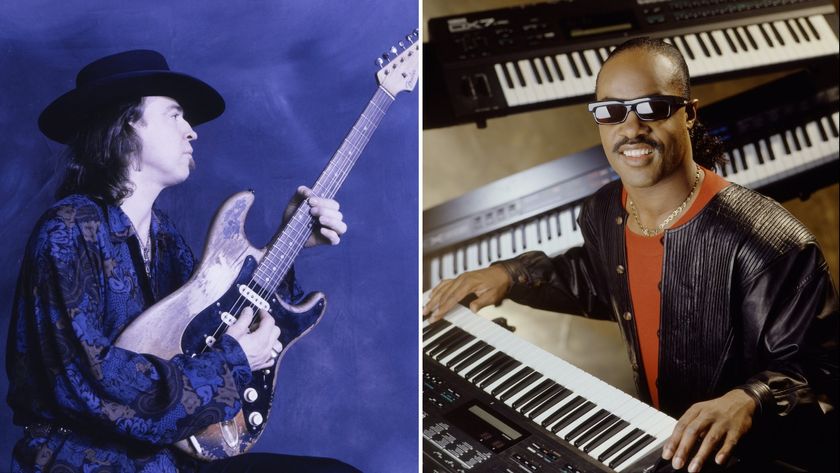
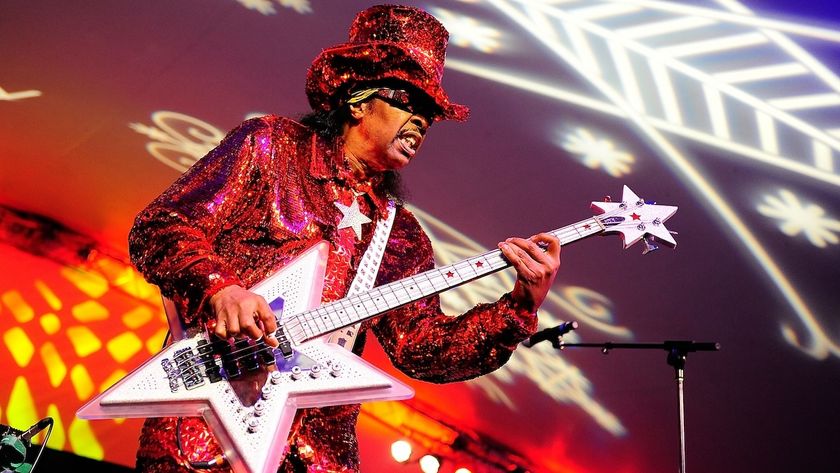
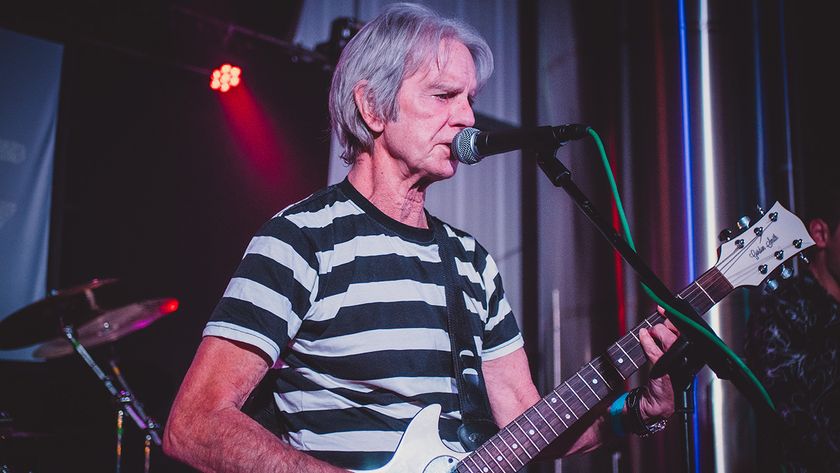
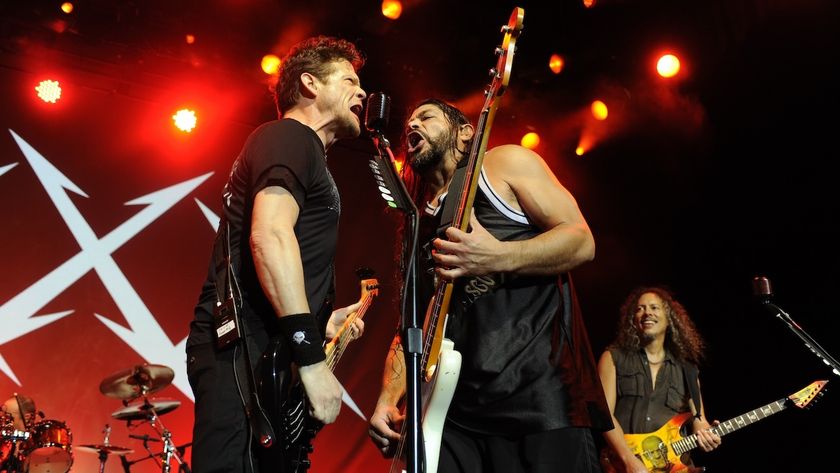

![[L-R] George Harrison, Aashish Khan and John Barham collaborate in the studio](https://cdn.mos.cms.futurecdn.net/VANJajEM56nLiJATg4P5Po-840-80.jpg)



